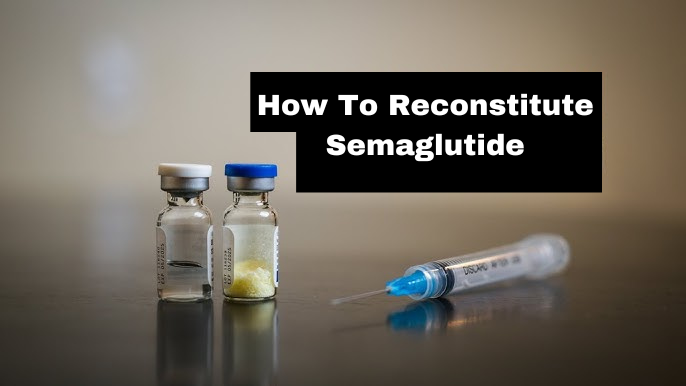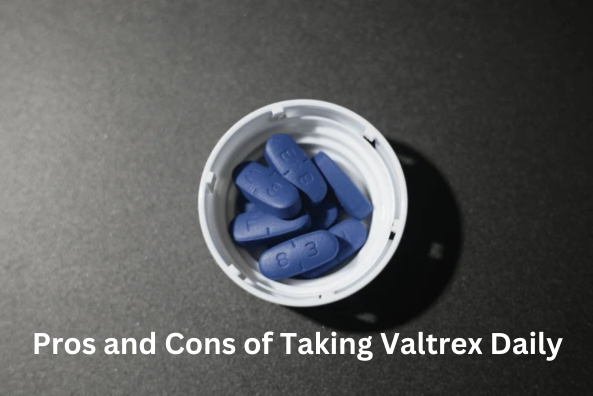How to Reconstitute Semaglutide: Ensuring Safe and Effective Administration

Semaglutide is an FDA-approved GLP-1 receptor agonist medication prescribed to treat type 2 diabetes and obesity. This drug class stimulates insulin secretion while decreasing glucagon secretion to control blood sugar levels and promote weight loss. Semaglutide should typically be injected subcutaneously; proper reconstitution must take place to ensure its efficacy and safety. This guide will walk you through these steps accurately.
Step 1: Gather Supplies
- Before initiating reconstitution, gather all necessary supplies. Semaglutide pen injector
- Semaglutide cartridge
- Sterile alcohol swab
- Sharps container (for safe disposal of needles)
- Clean, flat surface
Step 2: Examine the Semaglutide Cartridge
Check the expiration date on the semaglutide cartridge to avoid taking expired medication, then inspect for signs of damage or contamination to check its integrity; if compromised or damaged cartridges appear, do not use them and contact your healthcare provider or pharmacist as soon as possible for replacements.
Step 3: Prepare the Injection Site
To prepare an injection site, typically either in the abdomen or thigh area, use a sterile alcohol swab, clean it with soap and water, and allow the skin to air dry before proceeding with an injection.
Step 4: Attach the Needle
Wipe off contaminants from the semaglutide pen injector before securing a new needle from its packaging. Be careful when handling needle caps, as any contact could lead to contamination of the tip and needle.
Step 5: Reconstitute Medication
Start by holding the pen injector with its needle pointed upward. Insert and secure a semaglutide cartridge tightly within it before giving a gentle tap to release any air bubbles from its cartridge. Tap this cartridge gently so any air pockets rise to the top.
Carefully flip the pen injector upside-down and press slowly on its plunger until all medication has been thoroughly mixed. Avoid vigorous shaking of the pen injector as this could result in foaming that interferes with accurate dose delivery.
Step 6: Prime Your Pen
To ensure that the needle is filled with medication and that any air bubbles have been eliminated, follow these steps to prime the pen injector: dial two units, then press the injection button; this helps ensure proper medication distribution to the needle and minimizes any air pockets that might form in the needle tip.
Step 7: Administer an Injection
To administer the injection, pinch and insert the needle at a 90-degree angle into clean skin at the injection site, fully depressing the injection button to administer your medication and holding down for several seconds to ensure you have an adequate dosage.
Step 8: Discard the Needle
After administering the injection, remove the needle from its pen injector and dispose of it safely in a sharps container – do not recap the needle to avoid accidental needle sticks!
Step 9: Stow Away the Pen Injector
To store your pen injector according to the manufacturer’s directions, remove the cap from it and store it as instructed. Semaglutide pens should ideally be stored in the refrigerator; however, short-term storage at room temperature may also work in some circumstances. Never freeze medication!
How to Reconstitute Semaglutide 5mg
Prepare the Injection: Gather all the necessary supplies, including the semaglutide injection pen, a new needle, alcohol wipes, and a clean surface.
Inspect the Pen: Check the expiration date and ensure the medication is not discoloured or cloudy. If abnormalities occur, consult your healthcare provider and do not use the medication.
Attach the Needle:
- Twist and remove the cap from the needle.
- Attach the needle to the pen by twisting it securely onto the pen.
- Remove the outer needle cap, but leave the inner needle cap on.
Prime the Pen (First Time Use Only):
- Hold the pen with the needle pointing upwards.
- Tap the cartridge gently to move any air bubbles to the top.
- Press the dose button until the dose counter shows “0”, and a medication drop appears at the needle tip.
Reconstitute the Medication:
- Hold the pen with the needle pointing upwards.
- Carefully twist and remove the inner needle cap without touching the needle.
- Press the dose button until the dose counter shows “0”.
- Press the dose button and hold the pen upright until the green view window is filled with liquid. This may take a few seconds.
- Ensure that the entire window is green.
Mix the Solution: Roll the pen between your palms for about 15 seconds to thoroughly mix the medication. Do not shake the pen vigorously.
Check for Particles: Inspect the solution in the pen. It should be clear and free of particles. Do not use the pen if you see particles or the solution discolours.
Choose the Dose: Set the dose prescribed by your healthcare provider by turning the dose selector. Ensure that the dose counter shows the correct dose.
Administer the Injection:
- Hold the pen like a dart at a 90-degree angle to the injection site.
- Insert the needle into the skin and press the dose button.
- Keep the dose button pressed for at least 5 seconds to ensure the entire dose has been delivered.
- Remove the needle from the skin and dispose of it properly.
Dispose of the Pen: Replace the outer needle cap and store or dispose of the pen according to the manufacturer’s instructions.
Always follow the specific instructions your healthcare provider provides and the medication’s prescribing information. Consult your healthcare provider or pharmacist if you have any questions or concerns about reconstituting semaglutide.
More Read: How Much Bacteriostatic Water to Mix with 5mg of Semaglutide?
How to Reconstitute Semaglutide 3mg
Squeaky, clean your hands thoroughly with soap and water before gathering your supplies: A vial of semaglutide powder, a prefilled syringe with either sterile water or the provided diluent, alcohol swabs and an expiration date check on its vial is required to administer treatment successfully.
First, remove the protective cap from the vial of semaglutide powder and clean its rubber stopper using an alcohol swab before allowing it to dry completely. Next, please take out your prefilled syringe and remove its cap; insert its needle through its rubber stopper into your vial before injecting all the diluent.
Gently swirl the vial to mix powder and diluent; do not shake vigorously. Inspect your solution for particles or discolourations; if any are detected, contact your healthcare provider immediately and discontinue using this solution. When thoroughly blended, your solution is ready for use.
Follow your healthcare provider’s instructions when administering semaglutide injection.
key Factor on Reconstitute Semaglutide
- Storage temperature: Semaglutide should be stored according to the instructions provided by the manufacturer. Generally, it should be refrigerated between 36degF and 46degF (2degC up to 8degC). It is essential to store the medication in this temperature range to avoid degrading the active components.
- Protection from light: Semaglutide should be stored in the original packaging or in a protected container that shields it from exposure to light. Exposure to direct sunlight or artificial light may cause the medication to degrade, reducing its effectiveness.
- Avoid freezing: Semaglutide should not be frozen. It could alter the chemical composition of the drug and render it useless. Ensure the medication is protected from areas subject to freezing temperatures, like the freezer compartment in fridges.
- Verify Expiration Date: Before making a new semaglutide formulation, look up the expiration date on the packaging. Do not take semaglutide after it has expired, as it might not be efficient or safe.
- Check Cartridge Integrity: Check the semaglutide cartridge to determine if there are indications of contamination or damage before using it. If the cartridge is found to be damaged by any means, you should not use it and consult your physician or pharmacist to request an alternative.
- Clean hands and the injection site Semaglutide: Before handling the drug or injecting it, make sure your hands are clean and the injection site has been cleaned using a sterile alcohol swab. This will reduce the risk of introducing harmful substances which could compromise the safety of the drug.
- Follow Reconstitution Instructions: adhere to the manufacturer’s directions for reconstituting semaglutide in a controlled manner. This involves appropriately assembling the pen injector, attaching the needle, and mixing the drug into the diluting solution per the method prescribed by the manufacturer.
Observing these essential aspects when handling and storing semaglutide ensures the effectiveness of the medication and ensures its safety when it is administered. A proper storage and handling method aids in the efficacy of semaglutide’s treatment in controlling type 2 diabetes or overweight.
The Benefit of Semaglutide
Semaglutide improves Blood Sugar Control. Semaglutide helps control blood sugar levels by stimulating insulin secretion and inhibiting glucagon release. This results in greater glycemic control, lowering the risk of excessive glycemia (high glucose levels) and the associated complications.
The Weight Loss Semaglutide can help obese people lose weight. It does this by increasing the sensation of fullness, reducing appetite, and reducing the process of emptying the gastric tube – which can lead to a sustained loss of weight over time.
- Clinical studies have identified Cardiovascular Benefits: The results of clinical studies prove that semaglutide can bring benefits to cardiovascular health, including lower risk of strokes, heart attacks, and other cardiovascular issues for those who are at a higher risk of having type 2 diabetes than taking the medication.
- Low risk of hypoglycemia: Semaglutide could be less prone to risk than other diabetes drugs when it comes to causing the condition known as hypoglycemia (low levels of blood sugar), most often when taken in conjunction with other treatments that don’t typically cause it.
- Administration Convenience: Semaglutide can be used once weekly as an injection, making it more straightforward for patients who struggle to stick to their regular medication regimens and enhance treatment results.
- Potential Benefits for Renal: According to research conducted in recent times, semaglutide could offer kidney (kidney) protection benefits for those who have type 2 diabetes as well as chronic kidney disease. This includes reducing the risk of disease progression and advancement.
- Better quality of life: By successfully managing the levels of blood sugar, promoting weight loss, and reducing complications associated with diabetes, semaglutide can improve the living quality of people who have type 2 diabetes as well as overweight.
Semaglutide therapy could be an effective treatment option for those with type 2 overweight and diabetes. It offers numerous benefits beyond glycemic control, including weight reduction, cardiovascular protection, and improved quality of life. To make an informed choice regarding semaglutide, patients must discuss its advantages and drawbacks with their medical doctor to determine if semaglutide is the best treatment option for them.

